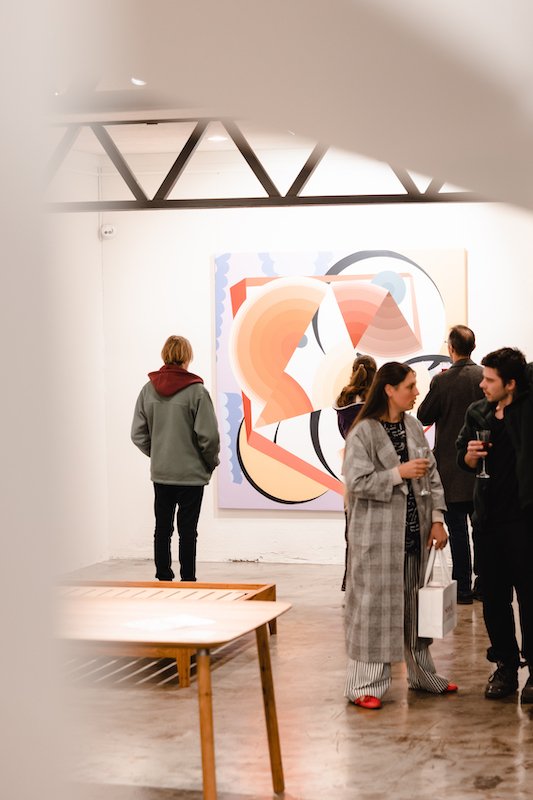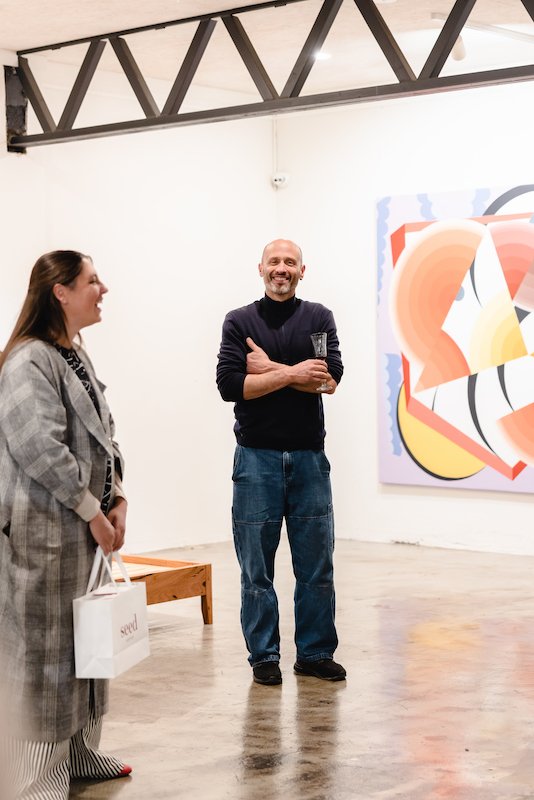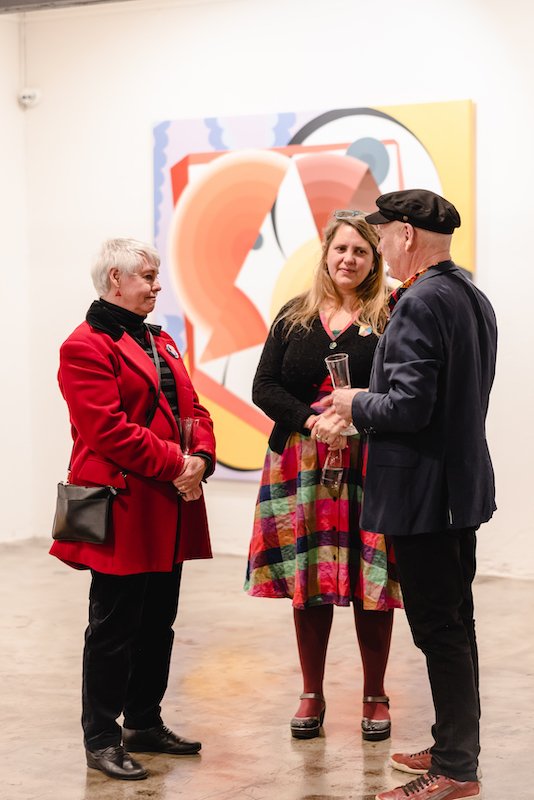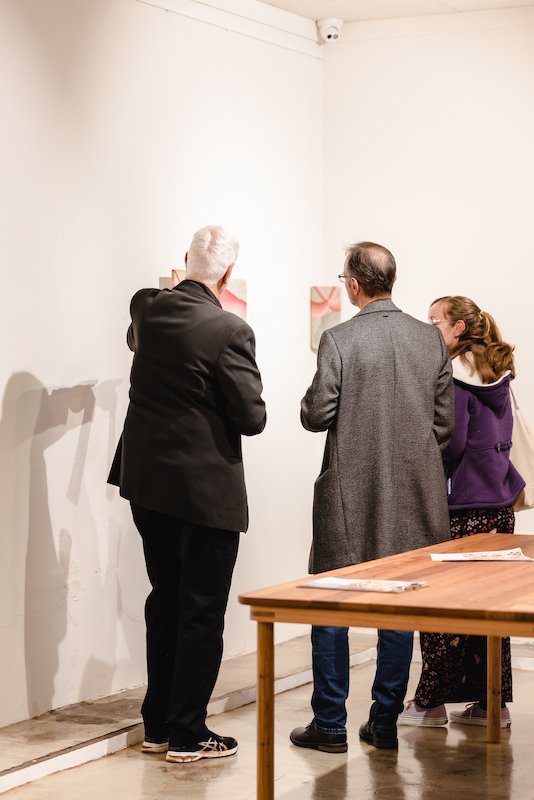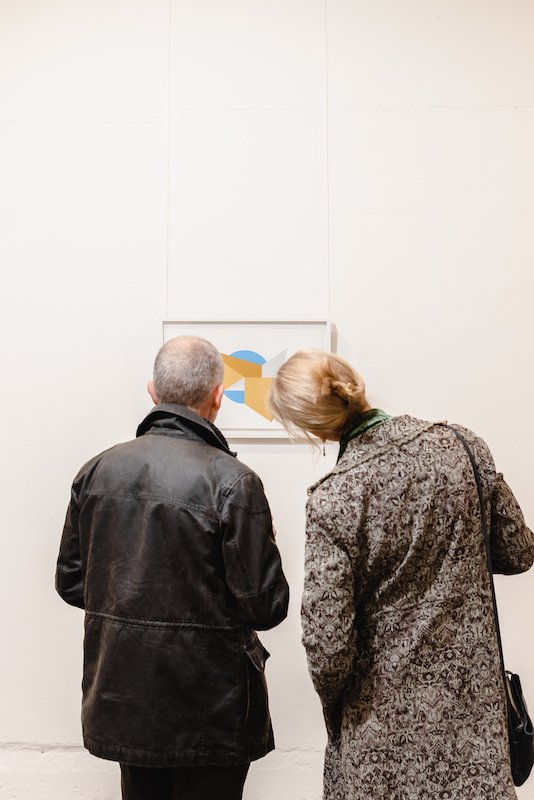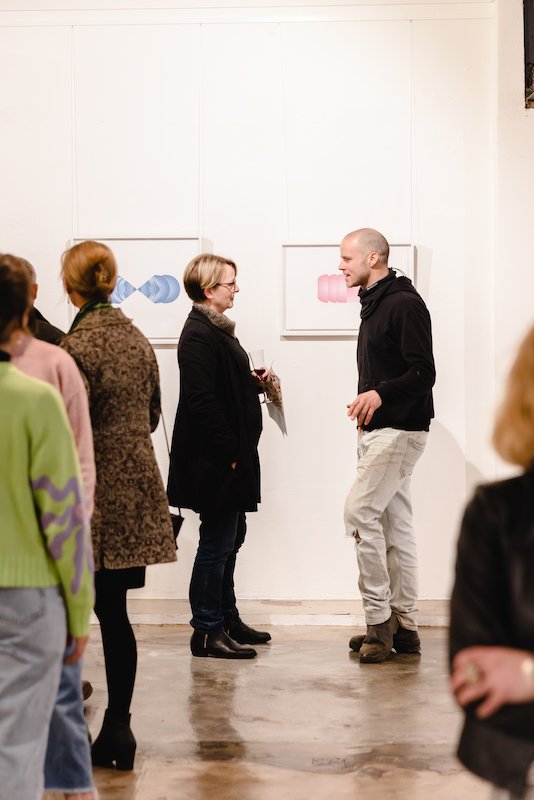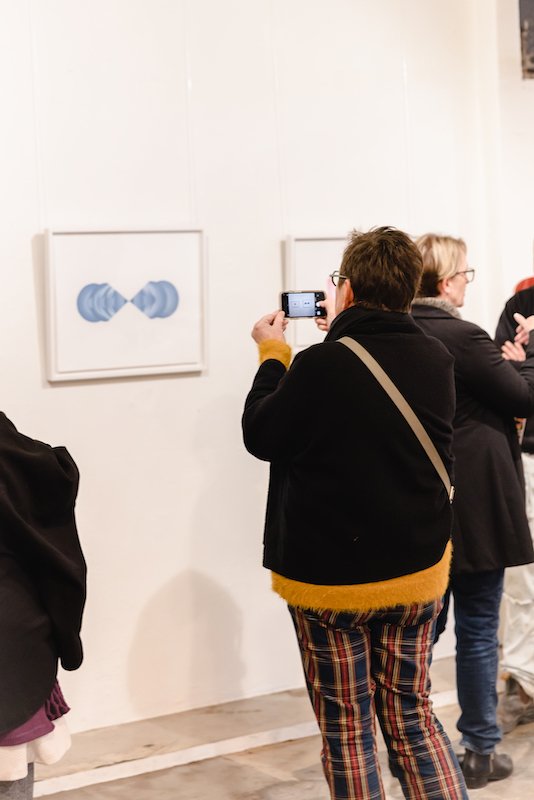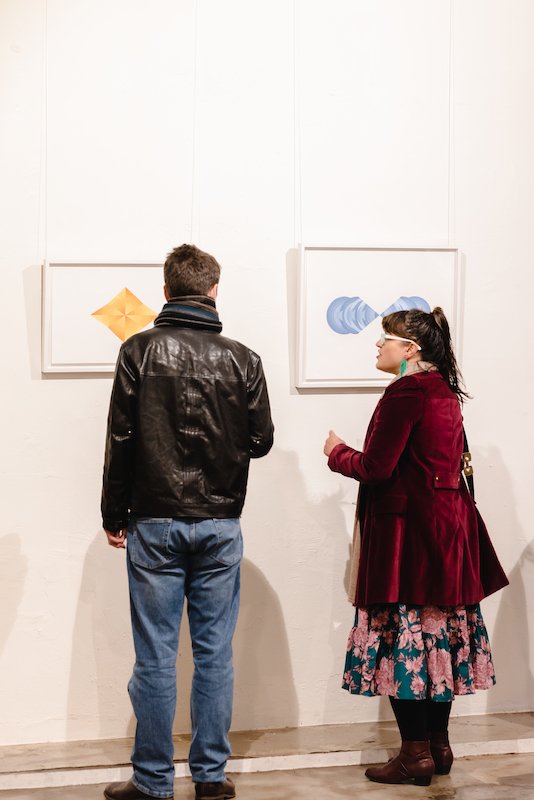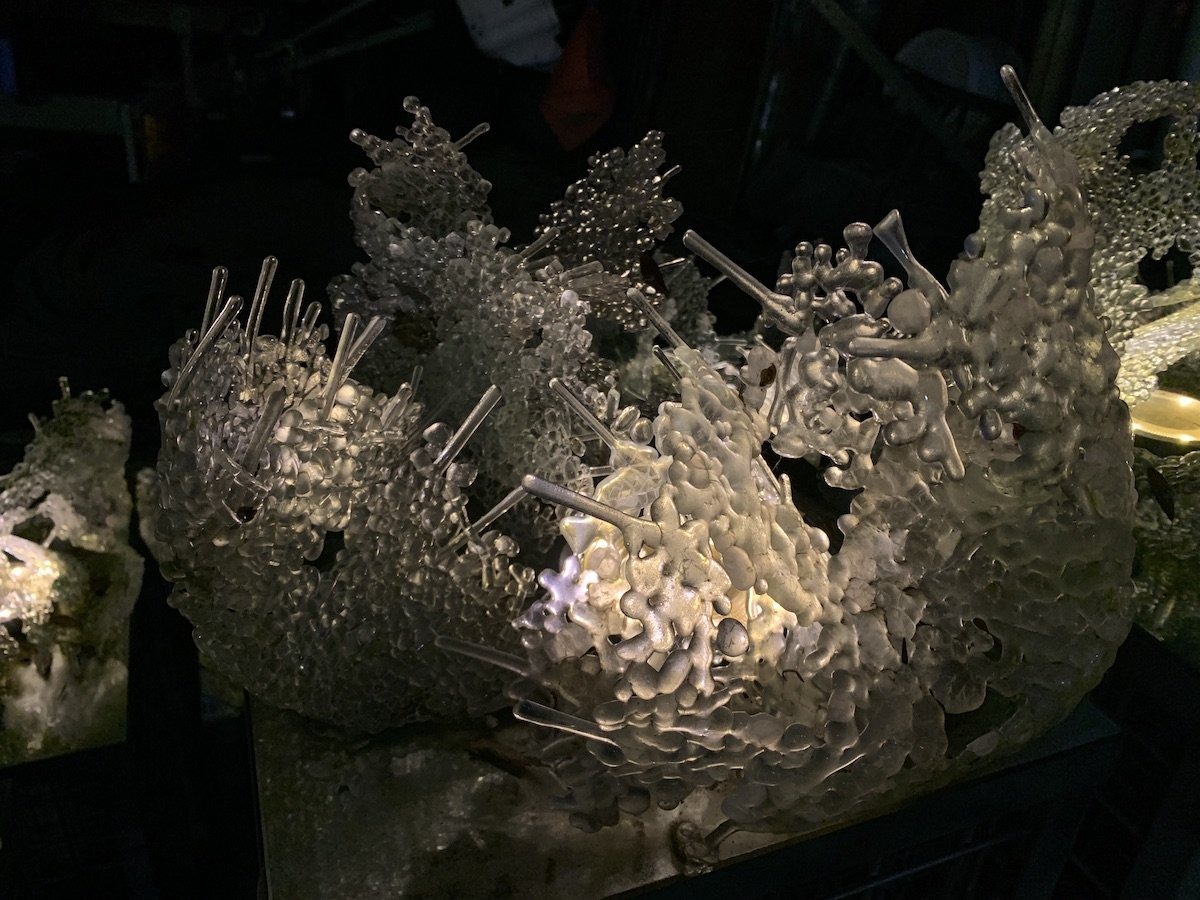Ham Darroch // Meet the Artist (Zig Zag Q&A Series)
August 2023
Our ongoing exhibition at The Mixing Room Gallery—Zig Zag—is open until August 12, featuring a collection of abstract painting by artists Al Munro, Hannah Beasley, Ham Darroch and Kate Vassallo.
We’re pleased to share our final interview as part of the Zig Zag Q&A Series, this time with local contemporary artist Ham Darroch.
In Zig Zag, Ham is exhibiting both small-scale works, from painted wooden floats, through to framed paper works and his larger-scale Basket of Flowers. His exploration of space is achieved through the physicality his work encompasses, and the practiced precision of his hand painting technique.
Drawing on his international experience, Ham reflects on Canberra as a place to draw inward and build a rewarding family life, while not discounting the need to go and look ‘outside’ towards the greater world.
Check out the previous instalments of the Q&A Series:
We hope you enjoy this Q&A series and hope to see you at the Zig Zag the exhibition before it finishes on 12 August. Ham is exhibiting nine stunning pieces, all of which are available to purchase.
You have recently returned from France where you were assisting Bridget Riley. What was that experience like?
I’ve worked for and with Bridget since 2004. She’s now 92 and still painting. So this work is an ongoing thing and a really consuming, engaging experience. I was already an artist before I started to work for Bridget. We share a very good rapport and I am grateful for the time we’ve spent working together. It’s a different kind of training and experience for sure. Sometimes I’ll go overseas by myself to do these intense bursts of work, but sometimes I’ll bring my family. For example, when I did an installation at the National Gallery, London, we all went together and stayed for six months. So it really depends on the nature of the work. If it’s just for a few weeks then I’d typically go alone.
How do you reconcile your artistic and family life?
It’s impossible to completely harmonise one’s art practice and family life, I think you need a balance in perspective: I consider myself to be an artist first and then other things come from that.
That said, I don’t find the separation from my family easy, especially when I am travelling abroad. Even though I’m very busy when I’m away, working long hours, I will write little comics for my son and send him a new installment every day, so he can follow the continuity of a story in my absence. It’s a good way to keep a feeling of connection with him despite my physical absence.
To be frank, presence and absence was a notable theme and significant part of my childhood. My father died when I was six, so I find it really difficult to be separated from my family. I’d rather they came with me all the time, but obviously I need to get down to work so sometimes it’s not practical.
What is your relationship with colour? Why is it important to you? Could you be a colour-less artist?
I have an evolving relationship with colour and am constantly considering how I can use colour in my work. Traditionally I made sculpture - relief carving, with some element of abstraction. I have a kind of pictorial, spatial consideration within that. I enjoy being able to make an image or painting from a pictorial spatial level. That’s what captures my imagination. To make that with colour has taken a lot of time - you need to build an opposition into that - white, blank space, or a dark tone.
The figurative-sculptural level is always still there. A lot of my large paintings have my physicality built into them. For example, in the case of Basket of Flowers, which is in Zig-Zag, I have used the size of my body to lay out the space within the work. The geometric shapes are literally borne from my body; the length of my forearm for example, as though it was used as a protractor.
“It’s impossible to completely harmonise one’s art practice and family life, I think you need a balance in perspective: I consider myself to be an artist first and then other things come from that.”
You work in sculpture, painting and performance. Does size matter? Do you find sculpture and other installations to be better platforms for exploring the optical effects of geometric colour?
There can be a kind of charming intellectual engagement with a smaller piece and I do make a lot of work in terms of works on paper, small paintings and sculptures. But I’ve kind of grown into this field of making large works and using my proportions - doubling and tripling them, to begin to have a broader discussion about size and perspective. It’s still mostly inside - I’m not painting on that many walls outside. I do the full range, however - hand held objects, through to very large paintings.
What is your perspective on the artist as student or academic? What does a university education provide an artist?
I did my undergrad at the Australian National University and then I went on to do my Masters at the University of New South Wales, by research. I also lectured at the UNSW School of Fine Arts for a year and a bit. My experience was that I cannot be a good teacher unless I apply myself fully to that.
Some people can teach and work at their art and are very good at it. University is a very supportive ‘base’ at times but it’s not for me. It’s not that I’d rule it out, but I cannot see myself there as a foundation for my life. I’d be more concerned with having an exhibition and producing a body of work - and that falling into a longer dialogue or survey about ideas.
I’ve previously worked in quite a few museums and galleries but thankfully I’ve been able to stop doing that on the whole to focus on my own work. Universities have been totally squeezed though. It’s hard to just be a student now, because the cost of a degree alone is pretty debilitating.
Coincidentally, the most interesting university lecturers I’ve met were struggling with their practice and being able to teach well - or they were visiting artists. Fiona Hall was a visiting artist while I was at uni - she was exceptional, and I’ve gone on to keep in touch with her.
That said, some artists are very well suited to academic practice and that could be for any number of reasons: social, pragmatic or political. But then you have people making artwork about colour and living in the world - university may not be an easy fit.
How do you achieve some precise results with your geometric paintings? What is your process and technique?
I don’t use tape, except to tape paper to the walls. I never mask my shapes. It’s all hand painted; it’s all practice. There is no taping or masking. It’s all just what I can do with the brush. Like the wall painting at the Drill Hall Gallery - I painted to the pencil line, the work evolves through drawing first.
My technical proficiency has absolutely got better over time - there have been times where it has grown and made a jump. The whole theory of expertise; it’s actually a freedom. Because by being good at free hand painting it saves me time. When you get up close you can see tiny wonky bits, but it means I can sit or stand and paint something - I am absolved of another process.
You have enough rules to get around; it’s good to not to impose them on yourself, in your practice. I love the abstract nature of it - that it could all go awry or that you can make a huge mess. If it’s in the drawing and in the colour, then most of the work is done. If I am working late at something, I’ve decided what colours are going where - and I can do that kind of mechanical aspect.
All the colours that I use all start with the same base colour. I find tone I’m happy with an then they are mixed to one end or another end of the colour spectrum. If there’s a red, it has blue in it - and the reverse. So there’s an agitation within that, the colours get into each other’s sphere of activity.
What influence, if any, has your international engagement had on your artistic expression? What does the wider world give you that Canberra lacks? Or how do you reconcile the international art world with living and working in Canberra?
Canberra is an interesting distance from other art centres. I’ve been lucky with my international work and have been able to see some great collections. Last week I was at the Tate in London. Canberra has the NGA and other cultural institutions and that is great.
Working for Bridget is another thing entirely - she is an artist of very high esteem who works incredibly hard on her own work. There is no measure to that, and to be able to live in Canberra but still tap into that international scene, for example, is a great privilege.
Do you think beauty is objective and absolutely, namely that all humans are hardwired to recognise it, and that there is nothing subjective about it?
We all want to see something beautiful, that’s true even if it’s an idea. As an artist you want to make something beautiful - or even if you want to oppose that, beauty might nevertheless be your starting point. I like to redirect objects with colour and introduce compositions for the viewer to engage with.
As far as making paintings, I have a set of spatial enquiries - if I can get these right, they will make a beautiful painting. It could be small or large.
What do you think of the assertion that it’s too easy to make a beautiful artwork or that it’s not interesting to do that?
If it was that easy to make something beautiful and lasting, how come there is not more of it? Long-term, you have to have the desire to make and communicate an idea or strong series of ideas that can be returned to, for yourself. If you can get to that point, you’re fine. A different artist will set up different dialogues with that. You might look for a different chord to trigger that response.
I do think there is a kind of sequence to art though, and it is beauty - chaos - beauty. You interrupt something as a process to make it memorable. Most artists can get to the point where they apply that, but that doesn’t mean it will be good work.
“You have enough rules to get around; it’s good to not to impose them on yourself, in your practice. I love the abstract nature of it - that it could all go awry or that you can make a huge mess.”
What have you observed about living a creative life in Canberra?
I think, on a basic level, you are pretty supported in a place like Canberra. I’ve observed that you can survive without being completely funded or employed, if you make a way to prioritise your art.
Things have gotten more expensive in terms of studio spaces, that’s tricky in Canberra. Culturally, as far as the high end - you get excellent exhibitions, for example at the NGA. The Canberra Contemporary Art Space does pretty well for not being a ginormous organisation. There aren’t really commercial galleries. I think if there were a few artist-run spaces, or commercial spaces that were viable, that would be a great addition. You kind of need to look out of Canberra - you want to also exhibit in Sydney, Melbourne or overseas. I have a gallery at Oxford, UK that represents me. That works too, in giving me access to a market I cannot get here.
Your studio is at Gorman House. How would you characterize the inner north?
I’ve lived in both the north and south. I had an ANCA studio at Mitchell 20 years ago. Then I had another three years at Dickson. And I’ve been here since 2019. I’m not that concerned with location but the city is good because you can get around and look at what’s on. I like that there are other cultural groups here too. I have friends who can come and visit. I don’t need to be in a large group of artists - at my stage where I’m at now, anyway.
You certainly meet interesting types - it’s got more of a university vibe North side, but that has always been the case. When I was at uni in Canberra years ago, I wouldn’t venture beyond Manuka, unless I was going to the tip or for a bush walk!
Weston Park is a great park, and Haig Park has gotten better too. When I lived in O’Connor there were more possums than people - it has been gradually fixed up. Though I’d say the fixing up happened sooner in the Inner South! Canberra is great for parks, playgrounds and bushwalks - it’s a wonderful city for children.
If you have the opportunity to go out for dinner in Canberra, what are some of your favourite restaurants?
I used to go out for dinner! Where did we go? I definitely remember going out for dinner in a previous life! But seriously, we love to cook at home and eat everything. We cook Thai, Italian, and good old meat and three veg. Can’t beat that.
Are there any local artists you are currently excited about?
I always enjoy the work of Kensuke Todo, Annike Romeyn, Alex Asch and Waratah Lahy. ANCA has some interesting artists like Joel Arthur and Kirsten Farrell.
There are also two other markers whose works I am drawn to. Phoebe Porter and I have been studio neighbours over the years. Love her work! And Zoe Brand is another whose works we enjoy and have in our own collection.
What role does art play in your home environment? Do you decorate and live with it? If so, how?
We live with it. We have our own collection of work throughout the house. But more than that, in the living and dining rooms we have trolleys full of paint. We all use them all the time. My wife’s an art teacher, so our living environment definitely reflects the involvement of art in our lives.
We do rest and change our art, so it’s not all the same, all the time. I’d say we acquire something new maybe three or four times a year.
Zig Zag Opening Night. Photos: Stevie Reinhart
Words by Ebony Levy.

